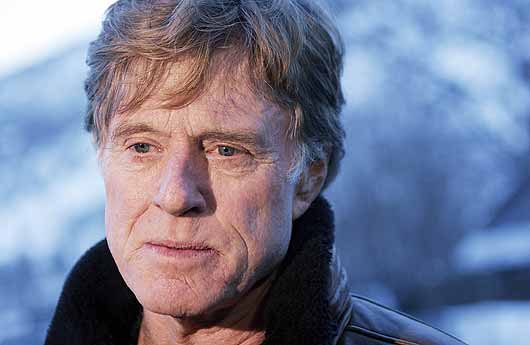
From May 11 to May 21, the first Sundance Institute at BAM series brings performances, panels, fourteen Sundance films, and festival founder Robert Redford to Brooklyn. Why Brooklyn? Because “so many filmmakers that have come through the Sundance Labs have come from Brooklyn; it’s a breeding ground,” says Redford, who—like any good carpetbagger—talked up his New York roots while discussing his influences with Logan Hill.
You were a jock growing up—but a Red Sox fan? Ugh!
Yeah, as a kid in California, Ted Williams was my focus, because he was from California and left-handed like me, but I had enormous regard for Brooklyn too. A film that we’re about to get started on is the real story about [general manager] Branch Rickey and Jackie Robinson—when the Dodgers were in Brooklyn.
Did you read much when you were a kid?
Well, I came from a lower-working-class family—one of the few Anglo families in a Hispanic neighborhood in Los Angeles. For me, sports was my way out. The only part of me in those days that shows up today is my interest in art.
What kind of art?
Drawing was an entertainment for me because I would be hauled along everywhere—there was no babysitting. I remember drawing the feet of my parents and their friends while they were playing cards, sitting under the table, until I made everybody nervous.
As a teenager, what were you into?
Two big cultural hits had a huge impact on me: jazz and Beat poetry. I just stumbled into jazz by accident, and heard Gerry Mulligan and Chet Baker and Hampton Hawes and Red Mitchell and those guys in this tiny little club in Los Angeles, where I was snuck in by an older lady. Almost simultaneous to that, on a sort of wild ride one weekend with some pals to San Francisco, we all stumbled into City Lights. We thought it was gonna be a little jazz club. But here were all these guys and I didn’t know who they were but—God Almighty—Kerouac, Ginsberg, and Rexroth, and Gary Snyder, on a little workshop stage, dressed in kind of preppy outfits, but this voice coming out of them.
Now it makes a little more sense to me how you lost your baseball scholarship in Colorado and set off to study art in France and Italy. What European artists did you admire?
Starting way, way back, Modigliani and finally Matisse, and some of the Impressionists, the Post-Impressionists. But mostly Modigliani because of his incredibly innovative self-expression. I guess I was being drawn to new ways of expressing oneself, and I just was on the road to finding that way for myself.
So you moved to New York to be a painter?
I’d always had an incredible fascination about New York, just because of what I had read. There was this mythology of Brooklyn. I read Henry Miller’s stuff on the Fourteenth Ward and going way back to people like Whitman.
Your first stop was art school at Pratt.
Pratt was very short-lived. When I started Pratt, I also almost simultaneously was going to the American Academy of Dramatic Arts here. Very soon, performing took command of my time. But I guess that both the visual art and the performing finally came together with Ordinary People, when I directed my first film.
What New York artists did you admire back then?
I hit New York shortly after Pollack had died, but de Kooning was still there, and Larry Rivers—they all certainly had some impact on me. At the end of the fifties, a lot of things were happening culturally. There were the quiz-show scandals. Broadway was at its height with [Tennessee] Williams and [Arthur] Miller and [William] Inge.
After falling for the Beats, did you fall for the sixties arts explosion?
Well, that fifties movement gave way to the cultural scream of the sixties, you know, Oh! Calcutta! and Hair. I began to lose interest around that time, because it seemed like it was just moving into a revolutionary state.
You played a huge role in the films of the sixties—which I think we all know about. But what led to Sundance? Did a certain film trend push you over the edge?
By 1980, when I started Sundance, I could see that the film business—which did through the seventies accommodate some of the edgier films, like Dog Day Afternoon —was following the youth market, and we went through kind of a cartoon period, where you had movies like Dick Tracy and Popeye. I worried that maybe the films that I liked to make were going to be taken away.
Did your time in New York influence the way you structured Sundance?
Basically, I just sort of incorporated what I had learned in the theater, which just had rehearsal space and never required a lot of mechanical stuff: just a body and a space, writing and performing. For the Labs, I thought, Well, if you could apply that to film, could you create something where filmmakers would have a chance to rehearse, and therefore fail, not as an end of something, but as the beginning?
The paparazzi and the advertisers have glommed on to Sundance.
Now it’s sort of two festivals, really; there’s the festival that we program and then the festival that gets perceived by the outer tier—the paparazzi and such. It’s just sort of a by-product of our society, that we’re focusing on the wrong things, and nobody seems to be connecting the dots as to what is going on or what it’s leading to. A lot of our society might not do it, but a lot of our films do.